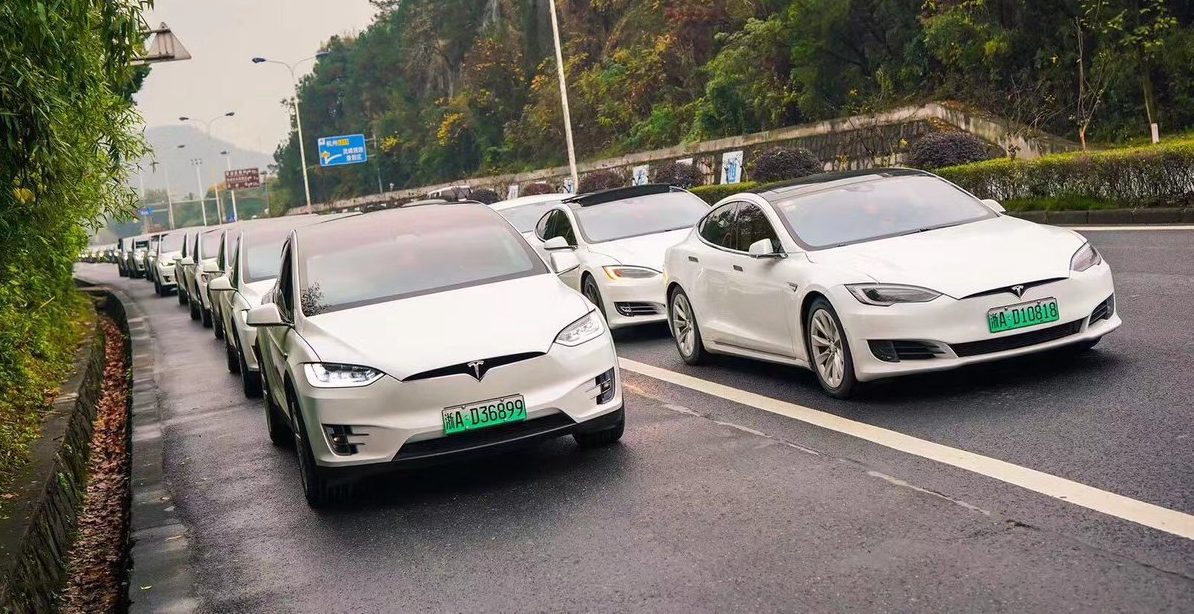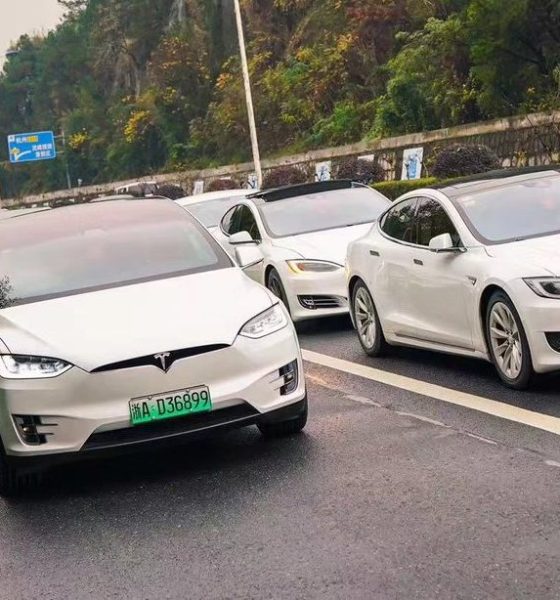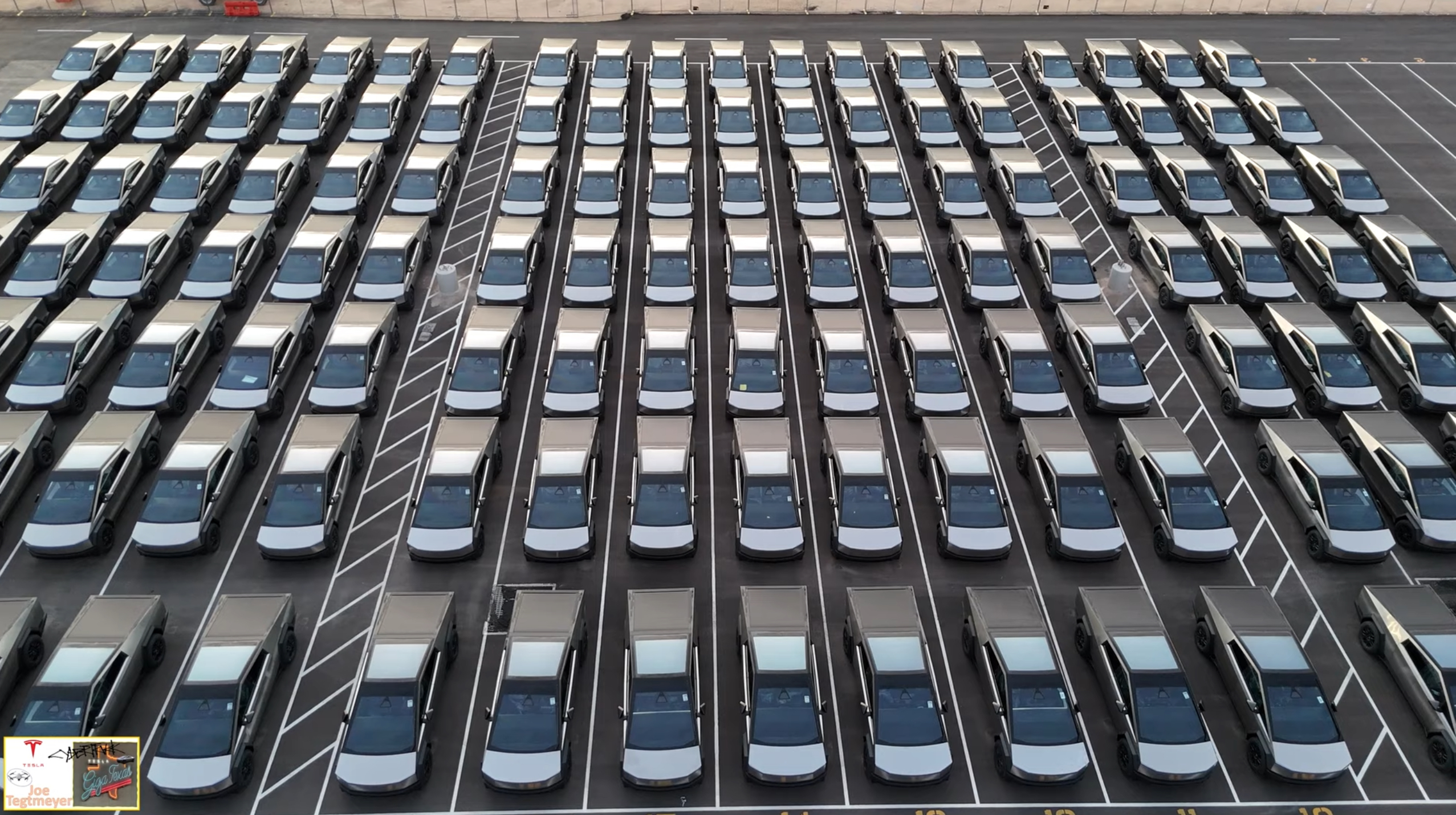

Investor's Corner
Tesla is “absorbing” part of import tariffs to lower Model S and X prices in China
In an effort to make its electric cars more affordable to customers in China, Tesla has announced that it is cutting the prices of the Model S and Model X by 12 to 26% despite the ongoing trade war between the United States and the Asian economic powerhouse. Apart from lowering the prices of its two flagship vehicles, Tesla also opted to adjust the price of the Model 3, which is currently open for orders in the country.
China is the world’s largest electric car market, and the segment is only bound to get more prominent in the coming years due to the country’s aggressive push towards renewable transportation. That said, China has opted to place steep import taxes for vehicles entering the country, resulting in Tesla’s electric cars, which are produced in the United States, being weighed down with a 40% tariff.
When the additional duties took effect last July, Tesla had no choice but to raise the prices of the Model S and X by 150,000 yuan ($22,647) to 250,000 yuan ($37,744), resulting in a fully loaded Model S P100D costing as much as 1.47 million yuan ($221,937) in China — significantly higher than the $147,000 price of the electric car in the United States.
2/ Tesla Zhejiang (China 🇨🇳) Members Club meeting photos$TSLA #Tesla #China #TeslaChina pic.twitter.com/iIn82BMw76
— vincent (@vincent13031925) November 19, 2018
In a statement to Reuters, Tesla noted that the company would be lowering the prices of its vehicles in the country by “absorbing” part of the 40% import tariffs placed on its electric cars.
“We are absorbing a significant part of the tariff to help make our cars more affordable for customers in China,” Tesla stated.
Tesla further remarked that the Model 3, which is currently open for orders for Chinese reservation holders, is being given a price adjustment. When Tesla initially opened pre-orders for the vehicle, the Long Range Model 3 AWD started at 580,000 RMB (~$84,000) and the Model 3 Performance was listed with a starting price of 690,000 RMB (~$100,000). In the United States, the Long Range Model 3 AWD currently starts at $53,000 while the Model 3 Performance stars at $64,000.
With its recent price adjustments in place, Tesla noted to the publication that the Long Range Model 3 AWD would now start at 540,000 RMB (~$78,000), while the Model 3 Performance would start at 595,000 RMB (~$86,000). These prices, while still notably higher than the vehicle’s cost in the United States, offers a significant reduction from the Model 3’s initial price in China nonetheless.
Tesla Model 3 Performance ( China 🇨🇳 ) option pricing breakdown.
MP3: 689,000 RMB ($100K)
Red exterior (China addition):
26,900 RMB ($3.9K)White interior: 10,800 RMB ($1.5K)
19inch Wheel: Free
Advanced autopilot: 54,000 RMB
($7.8k)@TeslaPodcast $TSLA #Tesla #Model3 #China pic.twitter.com/XcKLjTTgvf— vincent (@vincent13031925) November 16, 2018
Such adjustments could bode well for Tesla’s business in the country. Before the US and China’s trade war resulted in a 40% tariff for Tesla’s vehicles, after all, China’s Customs Tariff Commission under China’s cabinet announced that it would reduce car import duties from 20-25% to just 15%. The announcement was met with much enthusiasm by electric car buyers in the country, resulting in a Tesla gallery in Shanghai clearing out its entire Model X 75D inventory in 24 hours.
Tesla’s lowered prices for its vehicles in China is but the tip of the iceberg in the company’s plans for the country’s growing electric car market. Last month, reports emerged from local Chinese media that Tesla’s Gigafactory 3 in Shanghai — which would allow the company to produce vehicles locally, thereby avoiding import taxes — is getting funding from local banks. Tesla has also announced in its third quarter vehicle and production delivery report that it is accelerating the construction of Gigafactory 3, which is expected to produce both batteries as well as the Model 3 and Model Y.

Investor's Corner
Tesla analyst realizes one big thing about the stock: deliveries are losing importance

Tesla analyst Dan Levy of Barclays realized one big thing about the stock moving into 2026: vehicle deliveries are losing importance.
As a new era of Tesla seems to be on the horizon, the concern about vehicle deliveries and annual growth seems to be fading, at least according to many investors.
Even CEO Elon Musk has implied at times that the automotive side, as a whole, will only make up a small percentage of Tesla’s total valuation, as Optimus and AI begin to shine with importance.
He said in April:
“The future of the company is fundamentally based on large-scale autonomous cars and large-scale and large volume, vast numbers of autonomous humanoid robots.”
Almost all of Tesla’s value long-term will be from AI & robots, both vehicle & humanoid
— Elon Musk (@elonmusk) September 11, 2023
Levy wrote in a note to investors that Tesla’s Q4 delivery figures “likely won’t matter for the stock.” Barclays said in the note that it expects deliveries to be “soft” for the quarter.
In years past, Tesla analysts, investors, and fans were focused on automotive growth.
Cars were truly the biggest thing the stock had to offer: Tesla was a growing automotive company with a lot of prowess in AI and software, but deliveries held the most impact, along with vehicle pricing. These types of things had huge impacts on the stock years ago.
In fact, several large swings occurred because of Tesla either beating or missing delivery estimates:
- January 3, 2022: +13.53%, record deliveries at the time
- January 3, 2023: -12.24%, missed deliveries
- July 2, 2024: +10.20%, beat delivery expectations
- October 3, 2022: -8.61%, sharp miss due to Shanghai factory shutdown
- July 2, 2020: +7.95%, topped low COVID-era expectations with sizeable beat on deliveries
It has become more apparent over the past few quarters that delivery estimates have significantly less focus from investors, who are instead looking for progress in AI, Optimus, Cybercab, and other projects.
These things are the future of the company, and although Tesla will always sell cars, the stock is more impacted by the software the vehicle is running, and not necessarily the vehicle itself.
Investor's Corner
SpaceX IPO is coming, CEO Elon Musk confirms
However, it appears Musk is ready for SpaceX to go public, as Ars Technica Senior Space Editor Eric Berger wrote an op-ed that indicated he thought SpaceX would go public soon. Musk replied, basically confirming it.

Elon Musk confirmed through a post on X that a SpaceX initial public offering (IPO) is on the way after hinting at it several times earlier this year.
It also comes one day after Bloomberg reported that SpaceX was aiming for a valuation of $1.5 trillion, adding that it wanted to raise $30 billion.
Musk has been transparent for most of the year that he wanted to try to figure out a way to get Tesla shareholders to invest in SpaceX, giving them access to the stock.
He has also recognized the issues of having a public stock, like litigation exposure, quarterly reporting pressures, and other inconveniences.
However, it appears Musk is ready for SpaceX to go public, as Ars Technica Senior Space Editor Eric Berger wrote an op-ed that indicated he thought SpaceX would go public soon.
Musk replied, basically confirming it:
As usual, Eric is accurate
— Elon Musk (@elonmusk) December 10, 2025
Berger believes the IPO would help support the need for $30 billion or more in capital needed to fund AI integration projects, such as space-based data centers and lunar satellite factories. Musk confirmed recently that SpaceX “will be doing” data centers in orbit.
AI appears to be a “key part” of SpaceX getting to Musk, Berger also wrote. When writing about whether or not Optimus is a viable project and product for the company, he says that none of that matters. Musk thinks it is, and that’s all that matters.
It seems like Musk has certainly mulled something this big for a very long time, and the idea of taking SpaceX public is not just likely; it is necessary for the company to get to Mars.
The details of when SpaceX will finally hit that public status are not known. Many of the reports that came out over the past few days indicate it would happen in 2026, so sooner rather than later.
But there are a lot of things on Musk’s plate early next year, especially with Cybercab production, the potential launch of Unsupervised Full Self-Driving, and the Roadster unveiling, all planned for Q1.
Investor's Corner
Tesla Full Self-Driving statistic impresses Wall Street firm: ‘Very close to unsupervised’
The data shows there was a significant jump in miles traveled between interventions as Tesla transitioned drivers to v14.1 back in October. The FSD Community Tracker saw a jump from 441 miles to over 9,200 miles, the most significant improvement in four years.

Tesla Full Self-Driving performance and statistics continue to impress everyone, from retail investors to Wall Street firms. However, one analyst believes Tesla’s driving suite is “very close” to achieving unsupervised self-driving.
On Tuesday, Piper Sandler analyst Alexander Potter said that Tesla’s recent launch of Full Self-Driving version 14 increased the number of miles traveled between interventions by a drastic margin, based on data compiled by a Full Self-Driving Community Tracker.
🚨 Piper Sandler reiterated its Overweight rating and $500 PT on Tesla $TSLA stock
Analyst Alexander Potter said FSD is near full autonomy and latest versions showed the largest improvement in disengagements, from 440 miles to 9,200 miles between critical interventions pic.twitter.com/u4WCLfZcA9
— TESLARATI (@Teslarati) December 9, 2025
The data shows there was a significant jump in miles traveled between interventions as Tesla transitioned drivers to v14.1 back in October. The FSD Community Tracker saw a jump from 441 miles to over 9,200 miles, the most significant improvement in four years.
Interestingly, there was a slight dip in the miles traveled between interventions with the release of v14.2. Piper Sandler said investor interest in FSD has increased.
Full Self-Driving has displayed several improvements with v14, including the introduction of Arrival Options that allow specific parking situations to be chosen by the driver prior to arriving at the destination. Owners can choose from Street Parking, Parking Garages, Parking Lots, Chargers, and Driveways.
Additionally, the overall improvements in performance from v13 have been evident through smoother operation, fewer mistakes during routine operation, and a more refined decision-making process.
Early versions of v14 exhibited stuttering and brake stabbing, but Tesla did a great job of confronting the issue and eliminating it altogether with the release of v14.2.
Tesla CEO Elon Musk also recently stated that the current v14.2 FSD suite is also less restrictive with drivers looking at their phones, which has caused some controversy within the community.
Although we tested it and found there were fewer nudges by the driver monitoring system to push eyes back to the road, we still would not recommend it due to laws and regulations.
Tesla Full Self-Driving v14.2.1 texting and driving: we tested it
With that being said, FSD is improving significantly with each larger rollout, and Musk believes the final piece of the puzzle will be unveiled with FSD v14.3, which could come later this year or early in 2026.
Piper Sandler reaffirmed its $500 price target on Tesla shares, as well as its ‘Overweight’ rating.








